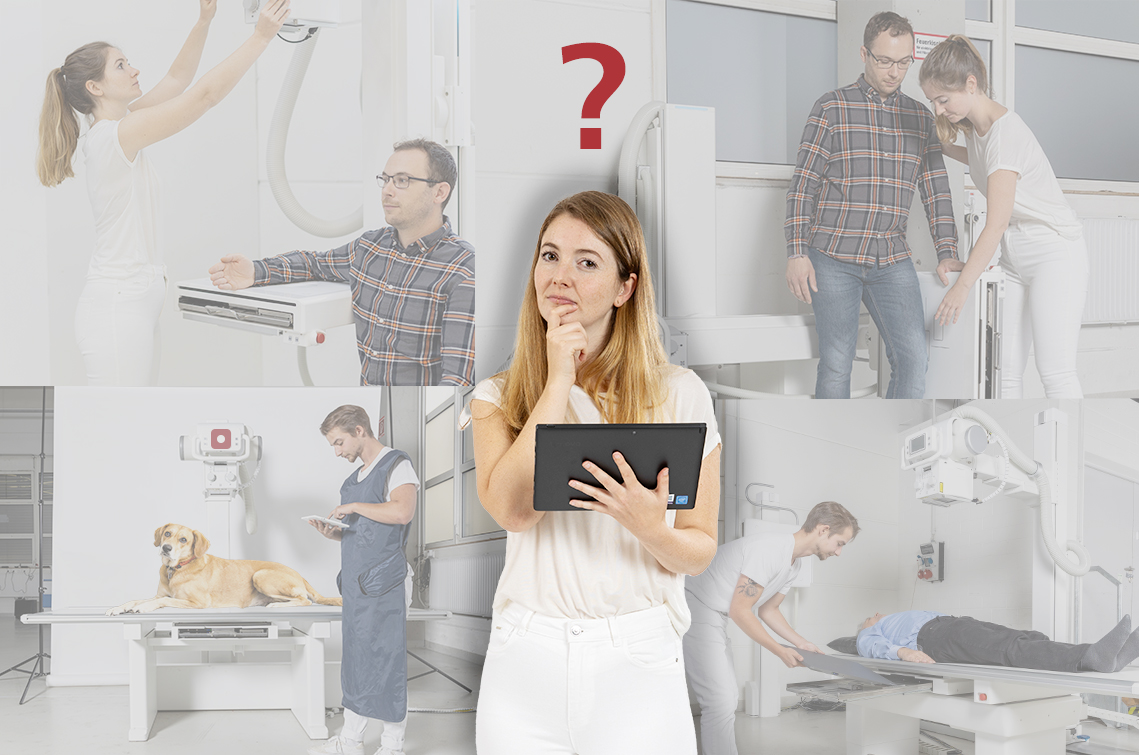Installation planning: Requirements for a new X-ray system
When you’re choosing a new X-ray unit, the system needs to be optimally matched to your requirements and needs. The first question that arises is, of course, is which type of unit is the right one for the circumstances in which you are going to be using it. First of all, we need to know what kind of images and the specific use to which the X-ray unit is going to be put. For example, will joints need to be X-rayed while standing or are patients going to be X-rayed lying down more often than not?
Depending on the circumstances, a patient table is also generally likely to be a necessity. There are various designs available here as well, from completely mobile to height-adjustable. The following questions are important when choosing an X-ray table:
- What is the maximum load (in kilos) that the X-ray table must be able to bear?
- Is a floating tabletop required?
- Does the tabletop need to be height adjustable?
For example, our floor-guided X-ray units with X-ray table ensure a wide range of functions are possible even in limited spaces, thanks to their small floor space requirements. Your individual preferences dictate whether you should choose the X-DRS Floor Basic, the X-DRS Floor Standard or the X-DRS Floor Standard E.
If you don’t want to be limited to taking X-rays with the patient lying down, we recommend using a swivel bracket system that takes X-rays in all positions using a single bucky tray. This is a particularly good solution if you have a more limited budget. Swivel bracket systems, such as the X-DRS Floor U-Arm or the X-DRS Floor Z-Arm, also offer a range of different functions for different areas of application.
Our ceiling-guided systems are appropriate for a comprehensive range of uses, combining the functions of previously installed X-ray systems.
When you’re choosing a new detector, you might also consider how frequently it needs to be removed from the bucky tray. If it does need to be removed often, a smaller version may be more suitable. Fixed installations require the larger types of detector, but our special docking station solution means that the detector can still be removed from the bucky tray if necessary.
If your X-ray system is also going to be used for more specific X-ray images, it is of course possible to extend range of functions that your new system incorporates. This applies, for example, to radiological images of body parts including the following:
- Full leg & full spine
- images
- Weightbearing leg x-rays
- Bedside lung images
With a precise profile of requirements for your X-ray facility, we can find the solution that works best for you and ensure that you get the best use possible out of it. Our expert technicians are available for on site visits to your premises, to help you with room analysis and discuss the planning of your new X-ray system with you.
